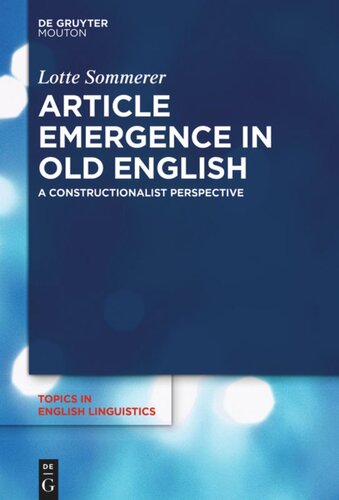

Most ebook files are in PDF format, so you can easily read them using various software such as Foxit Reader or directly on the Google Chrome browser.
Some ebook files are released by publishers in other formats such as .awz, .mobi, .epub, .fb2, etc. You may need to install specific software to read these formats on mobile/PC, such as Calibre.
Please read the tutorial at this link: https://ebookbell.com/faq
We offer FREE conversion to the popular formats you request; however, this may take some time. Therefore, right after payment, please email us, and we will try to provide the service as quickly as possible.
For some exceptional file formats or broken links (if any), please refrain from opening any disputes. Instead, email us first, and we will try to assist within a maximum of 6 hours.
EbookBell Team

0.0
0 reviewsThis book investigates nominal determination in Old English and the emergence of the definite and the indefinite article. Analyzing Old English prose texts, it discusses the nature of linguistic categorization and argues that a usage-based, cognitive, constructionalist approach best explains when, how and why the article category developed. It is shown that the development of the OE demonstrative 'se' (that) and the OE numeral 'an' (one) should not be told as a story of two individual, grammaticalizing morphemes, but must be reconceptualized in constructional terms. The emergence of the morphological category ‘article’ follows from constructional changes in the linguistic networks of OE speakers and especially from ‘grammatical constructionalization’ (i.e. the emergence of a new, schematic, mostly procedural form-meaning pairing which previously did not exist in the constructicon). Next to other functional-cognitive reasons, the book especially highlights analogy and frequency effects as driving forces of linguistic change.